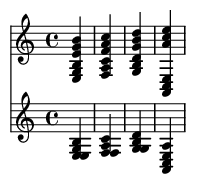Unlocking the Dark and Dramatic: A Guide to the Phrygian Progression
Summary:
This article explores the i-bII-bIII-iv Phrygian progression, a powerful chord sequence known for its dark, tense, and exotic sound. We will break down its theoretical foundation in the Phrygian mode, provide a clear MusicXML example for you to play, and examine its prominent role in genres from Spanish flamenco to heavy metal, empowering you to harness its dramatic flair in your own music.
Keywords:
Phrygian progression, i-bII-bIII-iv, Phrygian mode, music theory, chord progressions, modal harmony, Neapolitan chord, flamenco music, metal music, Spanish cadence, modal interchange, music composition.
Introduction: What Makes the Phrygian Sound So Special?
Tired of the same old major and minor chord progressions? If you want to inject tension, drama, and an exotic flavor into your songwriting, the Phrygian progression is your answer. This sequence of chords has a distinctive sound that can instantly transport a listener to a windswept Spanish landscape or the heart of an epic metal anthem. Its power lies in a single, crucial chord that defies standard diatonic harmony, creating a magnetic pull that is both unsettling and utterly captivating. It's the sound of suspense, passion, and raw power.
Definition and Theory: Building Chords on the Phrygian Mode
The Phrygian progression is a modal progression built from the Phrygian mode, the third mode of the major scale. Its defining characteristic is its lowered second scale degree (a minor second above the root), which is the source of its dark, tense quality.
For example, E Phrygian is the third mode of C major. It uses the same notes (C, D, E, F, G, A, B), but starts and resolves on E.
E Phrygian Scale: E-F-G-A-B-C-D-E
The interval between the root (E) and the second degree (F) is just a half step. This is the secret ingredient.
When we build triads on each degree of the E Phrygian scale, we get the following chords:
i (Emin), bII (Fmaj), bIII (Gmaj), iv° (Adim), v° (Bdim), bVI (Cmaj), bvii (Dmin)
Our focus is on the popular i-bII-bIII-iv progression. Note that while the diatonic iv chord is diminished (iv°), it is almost always altered to be minor (iv) in this progression for a smoother, more powerful sound. Let's break down the chords in E Phrygian:
i (minor tonic): The home chord. In E Phrygian, this is E minor (E-G-B).
bII (Major): The "magic" chord. This is a major chord built on the lowered second scale degree. In E Phrygian, this is an F Major chord (F-A-C). In classical theory, this is called the Neapolitan chord. Its root (F) creates a strong pull down by a half step to the tonic root (E), which is what defines the signature Phrygian sound.
bIII (Major): A major chord built on the third degree. In E Phrygian, this is a G Major chord (G-B-D).
iv (minor): A minor chord built on the fourth degree. In E Phrygian, this is an A minor chord (A-C-E). This is a common alteration of the naturally occurring A diminished chord (A-C-Eb) for a more consonant sound.
Example: The Phrygian Progression in Action
Example in MusicXML:
Here is the i-bII-bIII-iv progression in the key of E Phrygian, written for piano. The chords are E minor (i), F Major (bII), G Major (bIII), and A minor (iv). Notice the key signature is that of C Major (no sharps or flats), as E Phrygian is derived from the C Major scale.

Practical Applications and Genre Use
The Phrygian progression is more common than you might think and is a staple in several genres:
Flamenco Music: The Phrygian mode is the heart of flamenco harmony. The famous Andalusian Cadence is a prime example of this sound. It is often analyzed as iv-III-II-I in a minor key (e.g., Am-G-F-E). While it resolves to the V chord (E) of A minor, that E major chord functions as a temporary tonic, giving it a distinctly Phrygian feel. The tense, half-step resolution from the F chord to the E chord is central to the style's passionate expression.
Heavy Metal: The dark, powerful sound of Phrygian harmony is a perfect fit for metal. The dissonance between the root of the bII chord (F) and the fifth of the tonic chord (B in Em) creates a grinding tritone that metal guitarists love to exploit. Metallica's "Wherever I May Roam" uses a classic E Phrygian riff (E-F), and bands like Slayer ("Raining Blood") and Megadeth use Phrygian sounds extensively to create their aggressive and menacing tone.
Film & Game Scoring: Composers use the Phrygian sound to evoke mystery, tension, ancient history, or a sense of the exotic. It can instantly set a scene in a desert, a dungeon, or an epic battle. Howard Shore's theme for Mordor in *The Lord of the Rings* uses Phrygian elements to create a sense of dread and evil.
Historical Figures and the Neapolitan Chord
While no single person "invented" this progression, its core element—the bII or Neapolitan chord—has a rich history. Baroque composers like Alessandro Scarlatti were fond of it for its dramatic effect. Later, Ludwig van Beethoven used it masterfully to create moments of profound pathos and surprise, most famously in the first movement of his "Moonlight" Sonata (which is in C# minor, and features D major chords as the bII). In the 20th century, rock guitarists became the new champions of the Phrygian sound. Ritchie Blackmore of Deep Purple and Rainbow infused his hard rock with modal sounds, paving the way for countless metal guitarists like Kirk Hammett and Dave Mustaine to make the Phrygian progression a fundamental part of the genre's vocabulary.
Fun Facts & Pro Tips
Ancient Origins: The name "Phrygian" comes from the ancient kingdom of Phrygia in Anatolia (modern-day Turkey), though the ancient Greek mode and the modern church mode are not musically identical.
The "Spanish" Scale: Because of its prevalence in flamenco, the Phrygian mode is often called the "Spanish Gypsy" scale. A very common variant is the Phrygian Dominant Scale (the 5th mode of the harmonic minor scale), which has a major third (1-b2-3-4-5-b6-b7). In E, this would be E-F-G#-A-B-C-D, which creates the classic E major tonic chord in the Andalusian Cadence.
The Two-Chord Vamp: The i-bII progression is so powerful that it's often used on its own as a two-chord vamp to create a tense, driving feel. Try playing | Em | F | Em | F | to instantly create a heavy, dramatic riff.
Conclusion: Add a Touch of Drama to Your Music
The i-bII-bIII-iv Phrygian progression is a potent tool for any musician or songwriter. By understanding its construction from the Phrygian mode and recognizing the pivotal role of the bII (Neapolitan) chord, you can unlock a world of dark, dramatic, and expressive harmony. It’s a departure from the ordinary that can give your music a unique and memorable identity. What mood or scene could you create by incorporating the Phrygian progression into your next song?
References:
Piston, W. & DeVoto, M. (1987). Harmony (5th ed.). W. W. Norton & Company.
Levine, M. (1995). The Jazz Theory Book. Sher Music Co.
Benward, B. & Saker, M. (2008). Music in Theory and Practice, Vol. 1 (8th ed.). McGraw-Hill Education.
